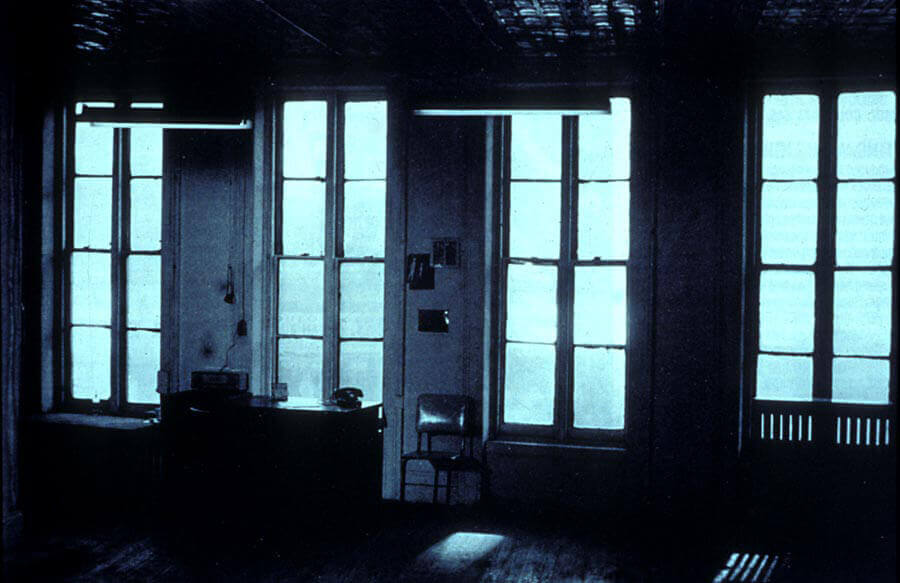Wavelength 1966

Michael Snow, Wavelength, 1966–67
16mm film, colour, sound, 45 min.
National Gallery of Canada, Ottawa
Filmed over one week in December 1966, edited and first screened early the following year, Wavelength was not Michael Snow’s first film but the groundbreaking work that catapulted him out of the painter’s studio, where it was shot, into the international avant-garde. The film was recognized on sight as having resolved in a perfectly integrated and remarkably efficient form the emerging desire among experimental filmmakers for simplicity and directness of cinematic expression, and for making imaginative use of the specific properties of the medium.
Wavelength is anything but simple, however, as Snow’s statement of intention suggests. He describes the film as “a summation of my nervous system, religious inklings and aesthetic ideas.” The spine of the film is its famous zoom from a fixed camera position facing a wall with four tall sash windows. Over the course of the film, the angle of view narrows until the frame is filled with a black and white photograph of waves pinned up between the middle two windows. Other features of the room, in which four events involving people take place, are sloughed off. The spectator is led to concentrate on this central element, the photograph—it has been there all along—until the image is washed out and the film comes to an end.

The four events that take place before the camera are the installation of a shelving unit, under the supervision of a woman; the return of this woman with a female companion and the playing of the radio; the sound of shattering glass, followed by the collapse on the floor and presumed death of a male figure; and the discovery of that figure by another woman, who places a telephone call and leaves the loft. The camera, surely the main protagonist, is a presence sensed over the course of the film, as it sometimes stutters in its cinematic language while making its way to the conclusion, a journey ruled and intensified by the sound of a rising sine wave. The colours of light (achieved through the use of gels), the artisanal quality of Snow’s ghostly montage, and elements of pure chance, such as sound drifting up from the street, offer escape and consolation to the spectator who is inexorably drawn to the watery depths of the final scene.
Since its release Wavelength has inspired writing by leading film critics and theorists, including Manny Farber, Jonas Mekas, Annette Michelson, and P. Adams Sitney. The curator Philip Monk titled his contributions to The Michael Snow Project—an exhibition and catalogue essay on Snow’s sculpture, film, and photo-work (1967–69)—“Around Wavelength.” The art historian Elizabeth Legge wrote a study of Wavelength for the One Work Series, published by Afterall Books.
In the early 2000s, as Snow became interested in digital media, he created WVLNT (or Wavelength for Those Who Don’t Have the Time), 2003, by cutting the film into three equal lengths and superimposing them. Initially conceived for theatrical presentation, the work also became a continuously projected gallery installation in 2005. Wavelength’s much pondered sequence of events, which was a scaffolding, not a plot, is compressed in WVLNT—the body is discovered before the man staggers in. But this concern could arise only from memory of the original work or in theatrical presentation. In a gallery projection, the visual effect of the superimposition is enthralling. The silvery waves, at three different scales, remain at the heart of the film.

 About the Author
About the Author
 Download PDF
Download PDF
 Credits
Credits